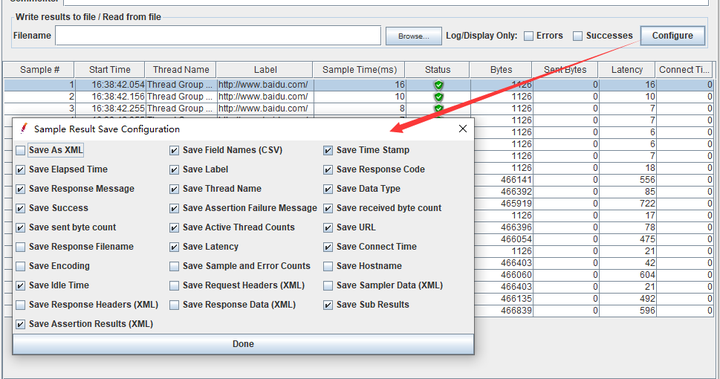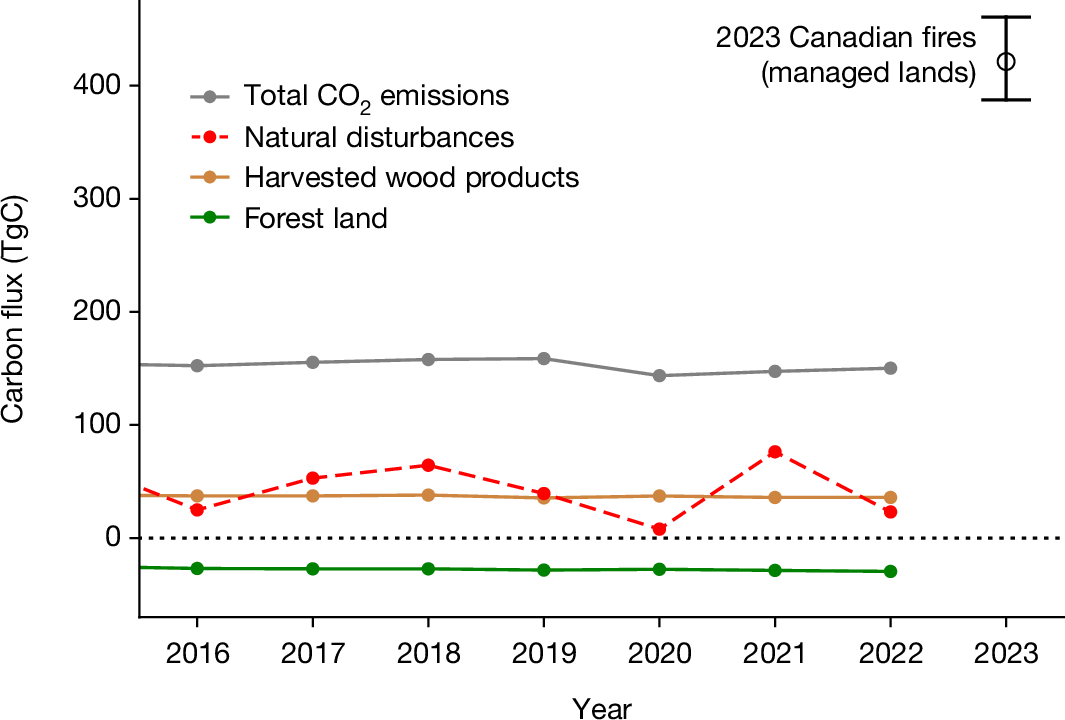
摘要:由高密度单原子填充的催化剂系统对于提高催化活性和选择性至关重要,这可以最大限度地发挥异质单原子催化剂 (SAC) 的工业前景。然而,实现金属含量超过 10 wt% 的高负载 SAC 仍然具有挑战性。在这里,我们描述了一种通用的负压退火策略,用于在典型的碳氮化物基质上制造金属含量高达 27.3–44.8 wt% 的超高负载 SAC,其中 13 种不同的金属。此外,我们的方法能够合成高熵单原子催化剂 (HESAC),这些催化剂表现出多种金属含量高的金属单原子共存。原位像差校正 HAADF-STEM (AC-STEM) 结合原位 X 射线吸收精细结构 (XAFS) 表明,负压退火处理加速了金属前体中阴离子配体的去除,并促进了金属物种与 N 缺陷位点的结合,从而形成了致密的 N 配位金属位点。将铂 (Pt) SAC 上的金属负载量增加到 41.8 wt% 可显著提高丙烷氧化对液体产物(包括丙酮、甲醇和乙酸等)的活性。这项工作提出了一种简单而通用的方法,用于实现许多低成本、高密度的 SAC,以实现高效的催化转化。
- Introduction:
先进催化剂的开发必须满足未来可持续化学的要求,但其商业潜力取决于高反应效率和最大原子经济性1。单原子催化剂(SAC)将原子分散的金属中心与可调的配位结构集成在适当的载体上,在电催化、光催化和热催化中表现出显著的活性和独特的选择性 。此外,该类催化剂的最大原子利用效率大大提高了原子经济性,特别是对于贵金属基催化剂。因此,它有利于可持续化学。鉴于SAC的这些优点,人们投入了巨大的努力来开发各种合成方法以用于许多技术应用。然而,考虑到其高表面能,SAC通常采用较低的金属负载量,以避免金属原子聚集成金属团簇或纳米颗粒。这导致较低的金属面密度。以Pt SAC为典型例子,它们在低碳烷烃的热驱动活化中表现出了令人印象深刻的活性和选择性 。文献分析表明,大多数Pt SAC的金属含量为2 wt%或以下(图 1a和补充表 1),大多数催化剂的Pt面密度很难超过1.5个原子/nm2(补充表1 ) 。在这种情况下,活性位点面密度不足的SAC不仅限制了其整体催化性能,而且降低了单位体积或质量催化剂的生产率。因此,开发一种通用的合成策略来获得具有高金属负载和足够面密度的SAC在该领域具有重要意义,但具有挑战性 。

最近,已报道了几种在不同载体上构建超高负载(UHL,高于 10 wt%)SAC 的策略。王等人采用交联碳量子点作为载体,以提供丰富的锚定位点,有利于高密度单金属原子的形成。卢报道了一种两步退火策略,可以在不同的碳和金属氧化物载体上获得高负载 SAC。该策略有效地控制了金属前体与载体的键合,并防止了热诱导金属聚集成纳米颗粒。邹开发了一种激光种植方法,同时产生缺陷和锚定金属原子,最终在碳、TiO2和 Cu NPs上实现了高负载单金属原子。与这些开创性的工作相比,一种不需要使用昂贵设备的简便且常规可用的合成策略对于高负载 SAC 的实际制备和应用具有很强的吸引力。
在此,我们报告了一种通用的负压退火方法来构建UHL-SACs库,该库由13种不同的过渡金属SAC组成,这些SAC负载于超高金属负载的聚合物氮化碳(PCN)上。基于XAFS和原位像差校正HAADF-STEM(AC HAADF-STEM),负压和热处理使金属原子能够快速分散在载体上而不是聚集,并被氮位点进一步捕获(图 1b)。结果,在PCN上成功制备了13种不同的SAC,超高金属负载量为27.3-44.8 wt%。此外,在氮掺杂碳(NC)上也可以容易地获得由多个金属位点组成且金属负载量高的SAC和高熵单原子(HESA)。这些证据有力地验证了负压退火策略在构建各种低成本、高面密度SAC方面的普适性和可扩展性。
结果与讨论
Pt UHL-SAC 的合成及结构研究
鉴于Pt基催化剂的广泛应用,首先研究了Pt的UHL-SAC。首先以PCN为基质,其在2θ为27.6和60.0°处表现出特征衍射峰(补充图 1)。C 1s和N1s XPS光谱进一步证实了CN键的形成(补充图 2),N/C原子比为1.05,为UHL-SAC的制造建立了充足的坐标节点。铂基UHL-SAC,表示为Pt SACs/PCN,是通过将氯铂酸浸渍到PCN上,然后在真空中退火而合成的。为了阐明负压环境的关键作用,通过在101KPa的氩气流中退火制备了参考样品(Pt NPs/PCN)。与 PCN 基材相比, 退火压力对 Pt 基催化剂的表观形貌和化学组成(补充图 3-5)的影响微乎其微 。此外,这两个样品的颜色在 Pt 沉积后从黄色变为黑色(补充图6 )。根据 ICP 分析,测得 Pt SACs/PCN 和 Pt NPs/PCN 的 Pt 含量分别为 41.8 wt% 和 40.9 wt%(补充表 2)。
Pt NPs/PCN 的 TEM 图像(图 1c)显示了尺寸约为 10-50nm 的金属颗粒的积累。Pt NPs/PCN 的 XRD 图案(图 1d)展示了晶体 Pt 特有的独特衍射峰,揭示了在环境压力下退火过程中 Pt 颗粒的形成。相反,在 Pt SACs/PCN 中没有观察到与晶体 Pt 相关的可辨别的衍射峰。此外,Pt SACs/PCN 的 TEM 图像(图 1e 和补充图 7)没有显示可观察到的 Pt 颗粒,强调在真空退火条件下有效防止金属聚集。为了深入研究 Pt SACs/PCN 中 Pt 位点的局部结构,采用了 AC HAADF-STEM 测量。图 1f、g显示分配给孤立 Pt 原子的密集亮点均匀分布在 PCN 上,证实了 Pt 位点在 PCN 上的原子随机分散(图 1h)。此外,根据测量的 PCN 的 BET 表面积 ,估计孤立 Pt 的平均面密度为 6.5个atom/nm2,与图 1g的像素统计数据(5.6 个atom/nm2)相似。这些结果表明 Pt SACs/PCN 是孤立 Pt 位点密度最高的催化剂之一。此外,EDS 元素映射(图 1i-j)证实了 Pt 的均匀分布,增强了这些统计结果的准确性。图 1k展示了 Pt SACs/PCN 的 XPS 结果,该结果再次证实了超高的 Pt 负载量(调查)并且 Pt 4 f7/2结合能为 72.7 eV,证明其具有正氧化态。Pt SACs/PCN 的 XANES 光谱将白线强度定位在 Pt 箔和 PtO2之间,进一步验证了 Pt 的部分正氧化态(图 1l)。FT EXAFS 光谱(图 1m)用于阐明 Pt 位点的配位环境。Pt SACs/PCN 在 1.6 Å 处显示出归因于 Pt-N 配位的主要峰,而在 2.5 Å 处没有 Pt-Pt 配位。该结果与小波变换结果(图 1n)无缝对齐,识别出 Pt SACs/PCN 中 N 配位的单原子 Pt 位点。这些发现为通过负压退火法成功制造超高负载单原子催化剂提供了确凿证据。
为了阐明 Pt SACs/PCN 的形成,分别在真空和氩气条件下,通过温度相关的原位 AC HAADF-STEM、非原位 XAFS 和 XPS 研究了退火过程中 Pt 物种的结构演变。真空条件下温度相关的原位 AC HAADF-STEM 图像如图 2a和补充图 10所示。在 20 °C 时观察到密集的亮点,表明 Pt 前驱体在基材上均匀分布。此外,即使将样品在 400 °C 下保温 359 秒,随着温度从 20 升至 400 °C,也没有产生团簇和粒子。相反,在氩气流中退火时,原子 Pt 只能在 300 °C 以下稳定(图 2b)。当温度达到 300 °C 时,可以观察到 Pt 粒子。当温度进一步升高到 400 °C 时,这些粒子变得更大。不同温度下相应的 EDS 元素测量表明,真空中 Pt/Cl 原子比的增加速度比氩气中更快(补充表 3),表明在负压条件下 Pt 前驱体中 Cl 的去除速度加快。

利用XAFS研究了配位变化。图 2c显示了不同温度真空条件下Pt L3边FT EXAFS光谱。在200°C时检测到Pt-Cl配位,在300°C时转变为Pt-N配位。此外,即使在400°C时也没有检测到Pt-Pt配位,不包括Pt-Pt键的形成。对于在Ar气氛下退火的样品(图 2d),200°C时占主导地位的Pt-Cl配位在300°C时显著减少,同时形成Pt-Pt配位,并且在400°C时Pt-Pt配位进一步占据主导地位。FT EXAFS结果与原位AC HAADF-STEM和EDS结果高度一致,证明了Pt前驱体在真空和Ar气氛中的不同转变途径。不同退火压力下Pt的氧化状态随着温度的升高呈现下降趋势(图 2e,f),这可能是由于Pt-Cl键的损失和Pt-N或Pt-Pt配位的形成所致。然而,对于在Ar中退火的样品,Pt的氧化状态低于在真空中退火的样品(图 2g)。这可以归因于Pt的电负性比N弱。这些结果说明了Pt UHL-SAC的演变,即Pt-Cl配位在相对较低的温度下迅速解离并生成活性Pt物种,并且真空条件通过促进Pt-N配位在相对较高的温度下极大地抑制了金属的聚集,从而使得能够形成高密度的Pt SAC。
通用制备金属 UHL-SAC
为了揭示负压退火方法的通用性,将该合成过程扩展到 PCN 上的其他 12 个单原子金属位点(M SACs/PCN,M = V、Cr、Mn、Fe、Co、Ni、Cu、Zn、Nb、Mo、Ir 和 Au,图 3a)。 所有这些催化剂的金属负载量均在 27.3 wt% 至 44.8 wt% 之间,并且确认金属面密度处于高水平(图 3b、补充表 2和补充图 9)。 XANES 光谱中的白线强度表示 M SACs/PCN 中金属位点的正氧化态(补充图 11)。 AC HAADF-STEM(图 3c)和 FT-EXAFS 光谱(图 3d)识别出 N 配位的单原子金属位点,并且不存在金属-金属配位,因此无法形成金属团簇。XRD、TEM、EDS 映射和 XPS 的表征结果显示在补充图 12 – 24中,进一步表明带正电的孤立金属位点在 PCN 基底上均匀分布,并且未检测到金属聚集。
还研究了负压退火方法在不同基底上的适应性。通过鸟嘌呤热解获得的 NC 代替 PCN 来制备 UHL-SAC(M SACs/NC,M=Pt、Fe、Co、Ni 和 Cu)。NC 基底的 XRD 揭示了石墨碳的结构。XPS 结果证实了 N 在碳上的掺杂。包括 AC HAADF-STEM、FT-EXAFS、EDS 元素映射、XANES、XRD 和 XPS在内的表征结果确定了这些 M SACs/NC 中具有正氧化态的 N 配位单原子金属位点。测得的金属含量高达 34.1 wt% (Pt)、21.5 wt% (Fe)、19.6 wt% (Co)、17.7 wt% (Ni) 和 29.8 wt% (Cu),证明在 NC 基底上获得了具有高金属面密度的 UHL-SAC。此外,在 NC 上还制备了含有 Pt、Fe、Co、Ni 和 Cu 的高熵单原子 ( HESAC )。如图4f、g和补充图 37所示 ,所有五种金属都以 N 配位孤立金属位点的形式均匀分布在 NC 上。 Pt、Fe、Co、Ni 和 Cu 的金属含量分别为 15.6、3.1、4.1、2.3 和 7.3 wt%,总金属含量为 32.4 wt%。确认了金属位点的正氧化态。此外,未检测到任何金属的凝聚态。虽然在 NC 上测试了有限数量的金属,但我们推测 NC 上 SAC 的形成遵循与 PCN 上相同的演化途径,证明了该合成方法在不同含氮碳基质上制备含有多种金属的 SAC 的多功能性。总之,这项工作提供了一种通用的合成策略来制造各种 UHL-SAC 甚至 HESAC。

Pt SAC/PCN 的催化评价
将丙烷部分氧化为有价值的液体含氧化合物代表了利用此类轻质烷烃的一种新策略。在目前的几种策略中,例如电催化、光催化、热衍生均相和热衍生非均相催化,非均相催化剂的开发显示出最大的应用潜力。然而,昂贵氧化剂的消耗对其构成了障碍。为了解决这个问题,迫切需要一种能够用低成本氧化剂将丙烷转化为含氧化合物的催化过程。受孤立 Pt 位点的分子氧活化能力的启发,本文评估了 Pt SACs/PCN 在丙烷与氧气氧化中的应用。
反应在 240 mL 高压釜中于 175 °C 下进行,以丙烷(5 bar)为反应物,氧气(6 bar)为氧化剂,乙腈(70 ml)为溶剂(图 5a)。降低的压力和气相色谱(GC)结果表明丙烷被消耗,气体产物被确定为 CO。有趣的是,在乙腈中检测到了液体产物,其中主要为含氧化合物(丙酮、乙酸和甲醇等),揭示了 Pt SACs/PCN 将丙烷转化为有价值的液体产物的能力。这些液体产物通过外标法进一步定量分析。如图5d所示 ,在 3 h 时确认液体产物为 37.1 mmol/g cat,随着反应时间的增加而增加,在 6 和 9 h 时达到 71.9 和 107.6 mmol/g cat,超过低负载 Pt SACs/PCN、Pt 纳米粒子 (Pt NPs/PCN) 和商业 Pt/C 催化剂 (图 5e )。为了揭示 Pt SACs/PCN 的本征活性,周转频率 (TOF) 和质量比活性被确认为 1.6 × 10−3molpro ·molPt−1 · s−1和 12.0 mmol/g cat /h,在先前关于丙烷与氧气活化性能的报道中处于良好地位。有趣的是,在与氧气作用的催化剂中,只有 Pt SACs/PCN 选择了生成含氧化合物的途径(图 5g)。这可能是首次观察到丙烷在氧气作用下非均相催化氧化为含氧化合物,这为利用丙烷获取有价值的液体产物提供了一种策略。此外,Pt SACs/PCN 的催化性能在重复使用五次后几乎没有衰减(图 5h),并且使用过的催化剂保持了密集的孤立 Pt 位点,证明了其稳定性。为了阐明底物的影响,还在丙烷氧化中评估了 Pt SACs 对 NC 的影响(图 5e)。与 Pt SACs/PCN 的趋势类似,Pt 负载量的 Pt SACs/NC 比 Pt 负载量和 Pt 颗粒较少的 Pt SACs/NC 表现出更好的活性,并且产物以含氧化合物为主。这些催化剂评估证明了高负载 Pt SAC 在活化轻质烷烃方面的潜在应用。

总之,我们报告了一种通用的负压退火策略,用于制造广泛过渡金属的超高负载单原子催化剂。除了单金属 SAC 外,还可以获得含有高金属含量的多个金属单原子的高熵单原子催化剂,证明了压力退火方法的普遍适用性。原位微观研究结合非原位 XAFS 揭示了真空退火条件在抑制金属物质聚集方面的关键作用,从而能够形成密集的 N 配位 Pt 位点。此外,UHL Pt SACs/PCN 在丙烷氧化生成有价值的液体产物中表现出优异的催化性能。这些发现为制备各种高密度 SAC 提供了有价值的指导,并在高效催化转化中显示出巨大的潜在用途。
方法
Materials. Guanine, melamine, vanadyl sulfate, chromic nitrate, manganous nitrate, ferric nitrate, cobaltous nitrate, nickel nitrate, cupric nitrate, zinc nitrate, niobium oxalate were purchased from Sinopharm Chemical Reagent Co. Molybdenum pentachloride, chloro-iridic acid, chloroplatinic acid, tetrachloro-auric acid were purchased from Aladdin. All solutions were prepared using deionized water. All the chemicals were used without further purification.
Synthesis of PCN. The mixture of melamine and dicyandiamide (molar ratio = 7:3) was pyrolyzed in a tube furnace at 600 °C for 1.5 h (Ar flow, 100 sccm). The obtained powder (3 g) was treated in 65 wt% HNO3 (50 ml) at 80 °C for 6 h, followed by an ultrasonic treatment for 1 h. The suspension was centrifuged and washed with deionized water to gain yellow powder, which was labeled as PCN.
Synthesis of NC. Guanine was pyrolyzed in a tube furnace at 600 °C for 1.5 h (Ar flow, 100 sccm). The obtained black powder was labeled as N-doped carbon (NC).
Synthesis of Pt SACs/PCN, Pt NPs/PCN, and Pt SACs/NC. Pt SACs/PCN were prepared via the impregnation-vacuum pyrolysis method. 20 ml chloroplatinic acid solution (0.075 mol/L) was added in 1 g PCN. The obtained suspension was ultrasonic treated for 15 min, aged at room temperature for 2 h, and dried at 80 °C for 8 h. The obtained powder was placed in a tube furnace. The tube furnace was firstly purged by 100 sccm Ar flow for 15 min. Then, the outlet was connected to an operating mechanical pump (limiting pressure 6 × 10−2 Pa), and the inlet was closed. After 1 h of pyrolysis under vacuum conditions at 400 °C, the black powder Pt SACs/PCN was obtained. Pt/NPs/PCN was prepared via the same procedure, except for the pyrolysis process, which was carried out in Ar flow (atmospheric pressure). Pt SACs/NC was prepared by the impregnation-vacuum pyrolysis method, using 0.035 mol/L chloroplatinic acid solution and NC substrate.
Synthesis of M SACs/PCN and M SACs/NC. M SACs/PCN (M = V, Cr, Mn, Fe, Co, Ni, Cu, Zn, Nb, Mo, Ir and Au) was synthesized via the same method with Pt SACs/PCN, using vanadyl sulfate, chromic nitrate, manganous nitrate, ferric nitrate, cobaltous nitrate, nickel nitrate, cupric nitrate, zinc nitrate, niobium oxalate, molybdenum pentachloride, chloro-iridic acid, and tetrachloro-auric acid as the metal precursor, respectively. The concentration of metal precursor solution was 0.17 mol/L for V, Cr, Mn, 0.2 mol/L for Fe, Co, Ni, Cu, and Zn, 0.12 mol/L for Nb and Mo, 0.075 mol/L for Ir, and 0.045 mol/L for Au. The vacuum pyrolysis temperature for V, Cr, Mn, Fe, Co, Ni, Cu, and Zn SACs/PCN was 500 °C. M SACs/NC (M = Fe, Co, Ni, Cu) were prepared according to the method of M SACs/PCN. The concentration of the metal precursor solution was 0.07–0.1 mol/L.
Synthesis of HESACs. HESACs were prepared according to the method of M SACs/NC. The metal precursor solution was a mixture of ferric nitrate, cobaltous nitrate, nickel nitrate, cupric nitrate, and chloroplatinic acid. Their concentration in the solution was 0.015, 0.015, 0.01, 0.03, and 0.02 mol/L, respectively.
Characterization. The transmission electron microscopy (TEM) images and the corresponding element mapping were recorded on a JEOL-2100F FETEM. The electron acceleration energy was 200 kV. The morphologies of the samples were measured on Thermo-Fisher Apreo S scanning electron microscope. HAADF-STEM images were recorded on the JEOL JEMARM200F TEM/STEM system. The in-situ heating aberration-corrected high-angle annular dark field scanning transmission electron microscope (Cs-HAADF-STEM) experiments were conducted on a double-spherical aberration corrected FEI Titan Themis Z scanning transmission electron microscope with an accelerating voltage of 300 kV combined with the in-situ heating holder provided by FEI company. The prepared precursor was dispersed onto the in-situ heating chip purchased from FEI company. Before STEM imaging, beam shower was carried out for 15 min. A probe size of 9 was used to image. The heating rate was set as 10 oC/min. To exclude the influence of e-beam irradiation, the images of control areas were collected only at each temperature point. The crystallographic phase of the as-synthesized materials was characterized by X-ray powder diffractometer (XRD, Bruker D8 Advance, λ = 1.5418 Å). Raman spectroscopy (WITec alpha300R, 532 nm laser) was used to study the structure and disorder of the catalysts. X-ray photoelectron spectroscopy (XPS) measurements were performed on a PHI 5000 VersaProbe III X-ray photoelectron spectrometer using an Al Kα X-ray source. The power is 12.5 W, the bandpass energy of the full spectrum test is 280 eV, and the bandpass energy of the fine spectrum test is 112 eV. The spectra are calibrated by C1s (284.8 eV), and the spectral analysis is performed by Avantage software. Inductively coupled plasma atomic emission spectroscopy (ICP-AES) was employed with PerKinElmer Optima 2100DV to detect the loading content of metal on catalysts. X-ray Absorption Fine Structure Spectroscopy (XAFS) were collected at beamline 1W1B of Beijing Synchrotron radiation Facility and beamline BL14W1 of Shanghai Synchrotron Radiation Facility. The acquired XAFS data were analyzed by Athena and Artemis software modules in IFEFFIT software package.
Catalytic performance test. The catalyzed oxidation of propane with molecular oxygen was carried out in a 240 mL autoclave reactor. In a typical run, 70 ml acetonitrile solvent and 100 mg catalyst were added in the reactor. And, 5 bar propane and 6 bar oxygen was then added in the reactor According to the ideal gas equation, the added propane was about 35.4 mmol. The reaction was carried out at 175 °C. After the reaction, the reactor was cooled to room temperature. The liquid phase was flited and analyzed by a gas chromatograph-mass spectrometer (Agilent 8890-5977B). The qualitative analysis was performed on a HP-5 MS capillary column (inner diameter 0.25 μm, length 30 m), and the quantitative analysis was performed with FID detector (as shown in Supplementary Figs. 43, 44), using HP-5 capillary column (0.25 μm, 30 m) and calculated by the external standard method (Supplementary Fig. 45). The gas phase was collected and analyzed by a Panna A60 gas chromatography. The yield of liquid oxy-compounds after 9 h reaction over Pt SACs/PCN is calculated by the moles of carbon in liquid oxy-compounds (23.19 mmol carbon) and the carbon inlet (35.4 mmol propane, 106.2 mmol carbon).
论文地址:General negative pressure annealing approach for creating ultra-high-loading single atom catalyst libraries
声明:仅代表推文作者个人观点,作者水平有限,如有不科学之处,请大家指正!


















